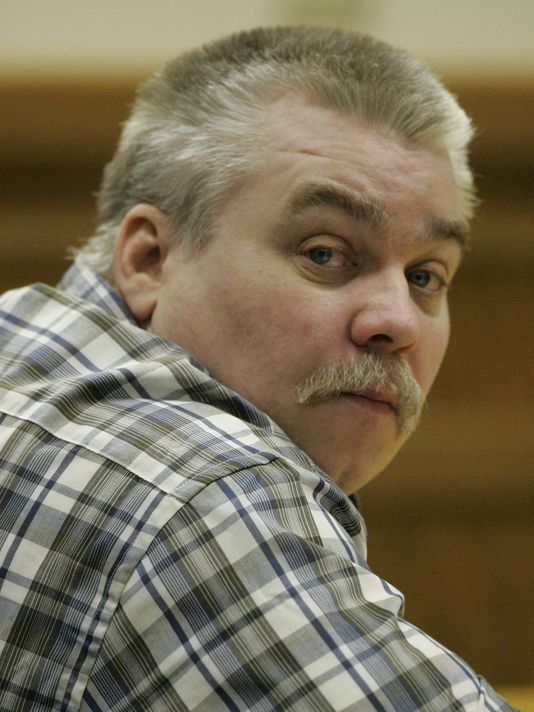 Warning: This article is not a review of the Netflix documentary series Making a Murderer; however, it does contain spoilers. Proceed with caution (and some enthusiasm).
Warning: This article is not a review of the Netflix documentary series Making a Murderer; however, it does contain spoilers. Proceed with caution (and some enthusiasm).
At this point, whether you watched the compelling and beautifully constructed docu-series Making a Murderer on Netflix, or not, you’ve heard about the case of Steven Avery. You would have had to if you’ve been on the Internet, particularly Facebook or Twitter, since the new year began. Basically everyone who knows how to log into a social media app has been screaming one of two things at the top of their fingertips: a) “Steven Avery and Brendan Dassey are innocent and must be released this instant. And the Manitowoc County Sheriff’s Department should be rounded up and thrown in jail themselves.” Or b) “Everyone from Group A is a moron, Avery and Dassey are guilty as hell!”
As usual, I’m here to tell you they’re both wrong.
The Difference Between Innocent and Not Guilty
The Netflix series recounts not only the long and twisted trial of Steven Avery for the murder of Theresa Halbach, a young woman who was working as a photographer for Auto Trader, but also the ordeal that makes Steven such a weirdly unique individual: his prior arrest and imprisonment 20 years earlier for a rape he conclusively did not commit. The series does a tight and interesting job of showing all the numerous ways the Manitowoc sheriffs completely bungled the case. This is all done in the first episode, and the shortcomings of the Manitowoc authorities are so glaring and disturbing as to warrant surprise on the part of the viewer that any of these people still have jobs in law enforcement. And this is a shocking moment indeed, when it is realized by the viewer that not only some of them do, they all do. For anyone who’s ever held a job where their performance was a factor in them staying employed (read: everyone in the free world) this will come as a shock.
More than incompetence, it seems pretty clear that there was a negligence and dereliction of duty that borders on the criminal in the railroading of Avery on the first charge. That’s what makes the involvement of the very same law enforcement officers in the second case so disturbing. Even a toddler with loose understanding of the English language and the rules of jurisprudence would probably be able to intuit why these people should be nowhere near a second major attempt to prosecute and incarcerate Avery.
The series also does a wonderful job in cataloguing all the myriad ways the very same people screwed up even worse the second time around. That’s the first takeaway from the series that is so glaring: how on Earth could the people who blundered the first case not realize how ridiculously they were blundering the second? Again one marvels at the continued employment of these people.
But herein lies “the rub,” of what makes the series’ creators and their compatriots in the media and audience so wrong. Avery and Dassey have not been proven innocent by this series. Not by a long shot. They are simply not guilty beyond a reasonable doubt.
Indeed there remains a laundry list of circumstantial evidence against the two, particularly Avery, that is very, very, hard to explain away. Like Serial, the popular podcast which highlighted the case of Adnan Syed last year, the creators, whose sympathies for the accused are only barely disguised, do yeoman’s work in establishing that most reasonable people would see tons of “reasonable doubt” in both cases. But neither of them answer many of the most burning questions, and both leave their subjects still under what can only be termed extreme suspicion.
So much suspicion, it seems, that seasoned legal vets like Nancy Grace and Jeanine Pirro (both former prosecutors turned TV personalities) and political writers like David Harsanyi didn’t stop at saying they believed he was guilty and attempting to explain away inconsistencies. They went much further, excoriating his defenders and vociferously defending the Manitowoc County sheriffs and prosecutors. Pirro went so far as to describe the evidence against Avery as “as solid as any murder case I’ve tried.” A statement that is strange not only because it literally means there’s no such thing as a slam dunk case, but also because Pirro prosecuted Robert Durst, who was the star of another even more compelling true crime docu-series from last year, The Jinx (but one that attempts to prove a free man guilty, not the other way around). And a case where the evidence against is voluminous and much harder to explain for the defense.
The moral of the story is that when you watch Making a Murderer, which everyone should, just bear in mind that the series is only showing you the case for Avery and Dassey. It does not show almost any of the state’s case against the men. Then take all of your rage against the system and your impassioned desire to see Avery and Dassey free, and channel it into the quest to use the system to show there was plenty of reasonable doubt and at least an unhealthy dose of malfeasance on the part of the prosecution and police in their trial. Because attempting to prove them innocent will be an uphill climb, to say the least.
These men don’t deserve to be instantly freed from jail. They deserve a new trial. A fair and impartial one that will ultimately prove them to be guilty or not guilty beyond reasonable doubt. And that’s all we get.
By Ygal Kaufman
Do you have a story for The Advocate? Email editor@corvallisadvocate.com

